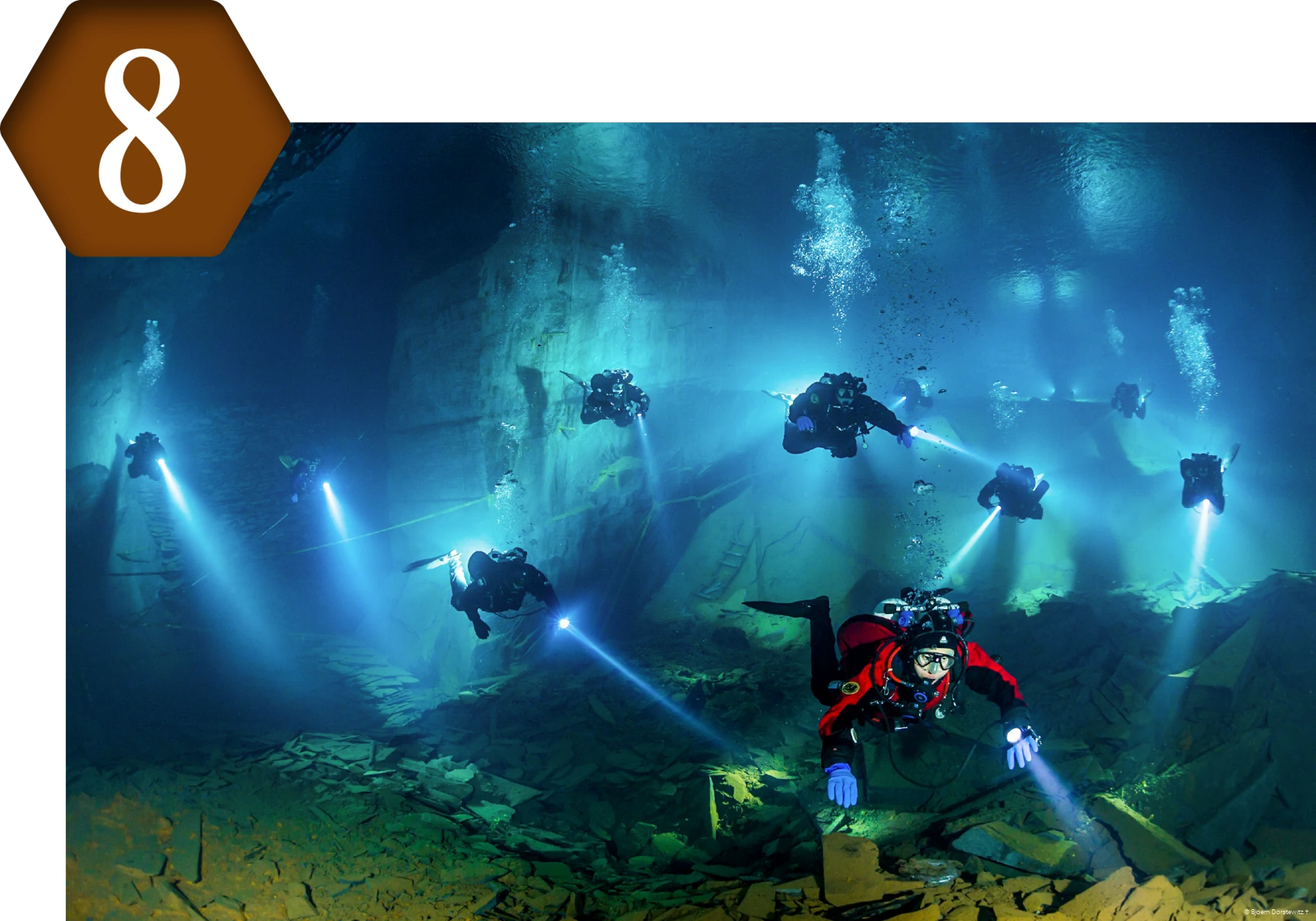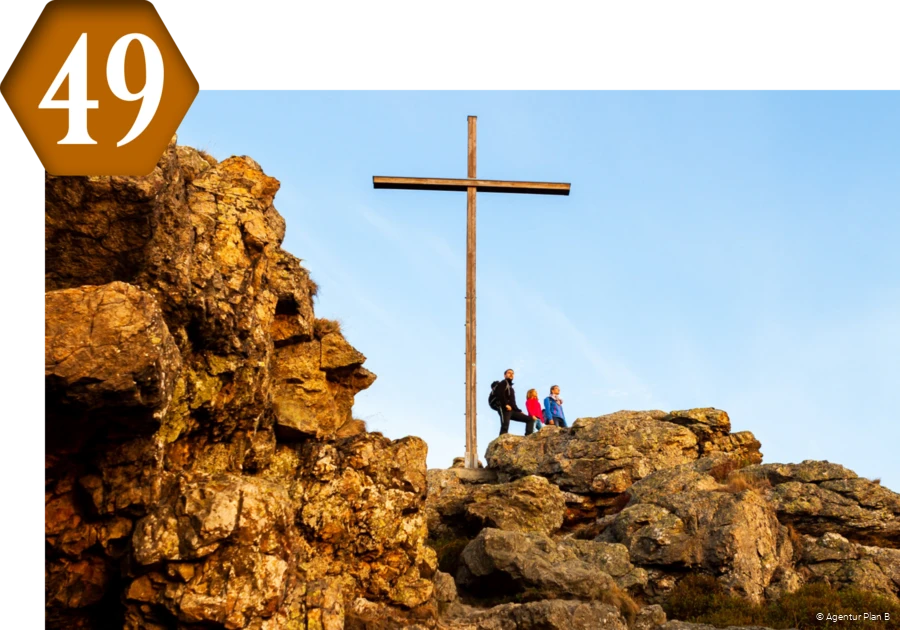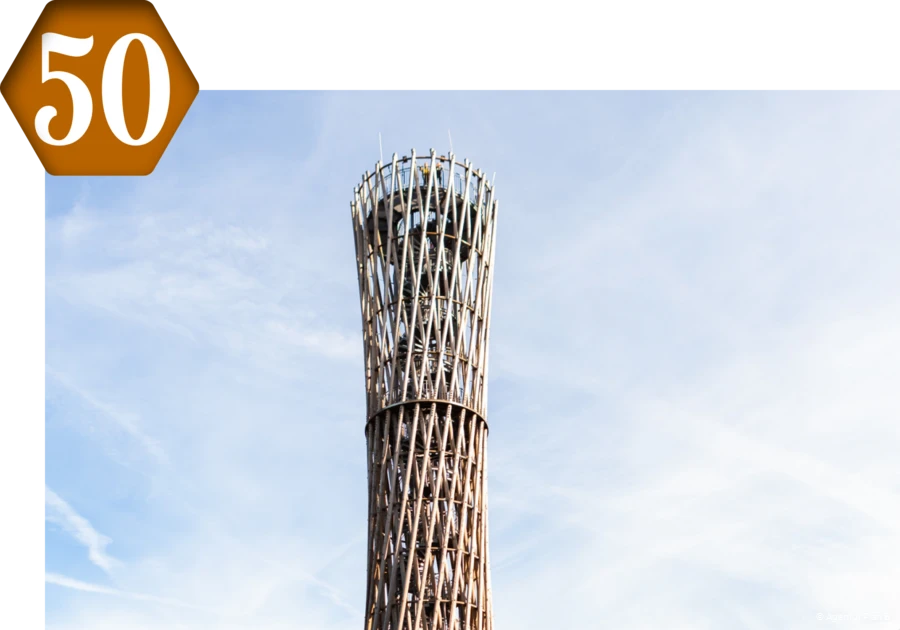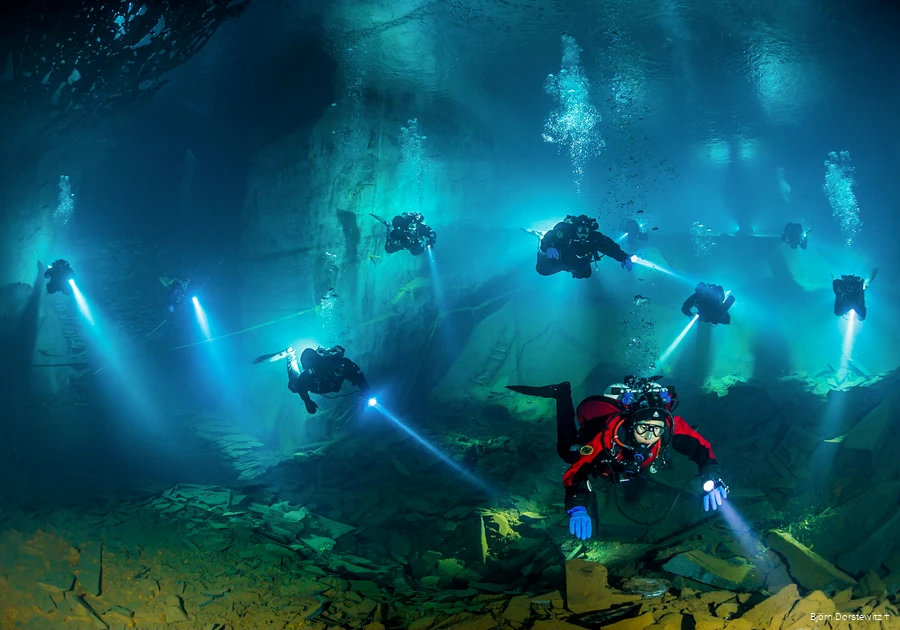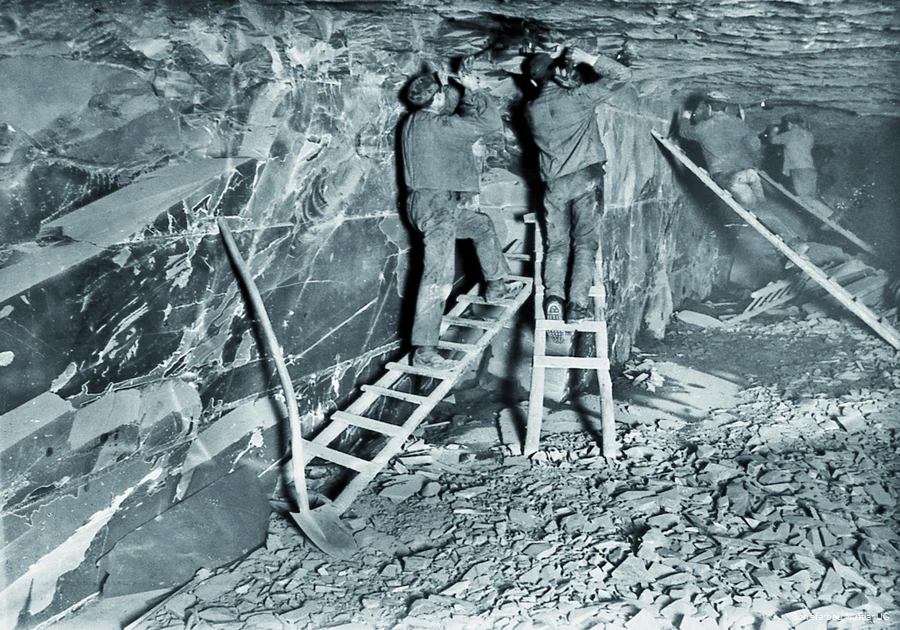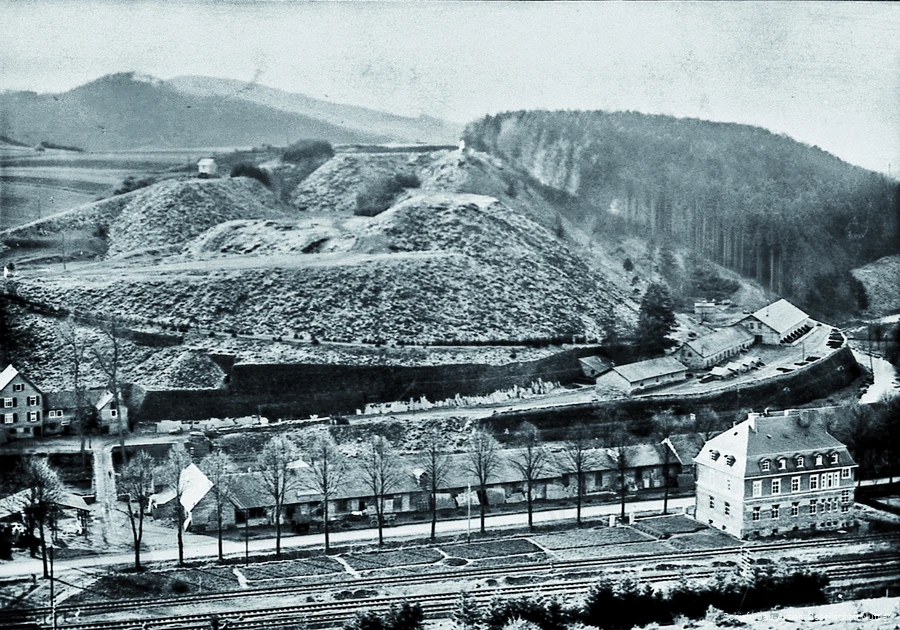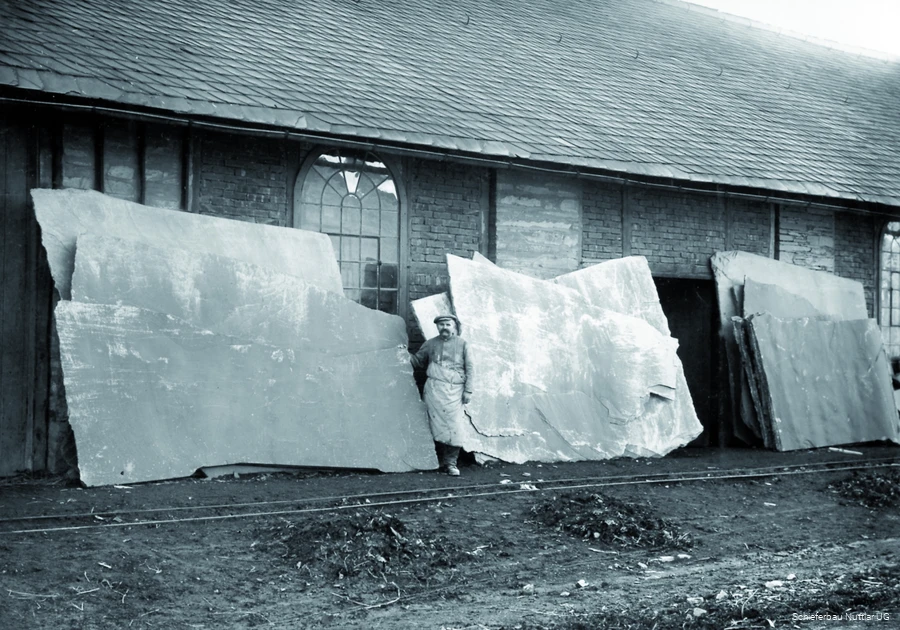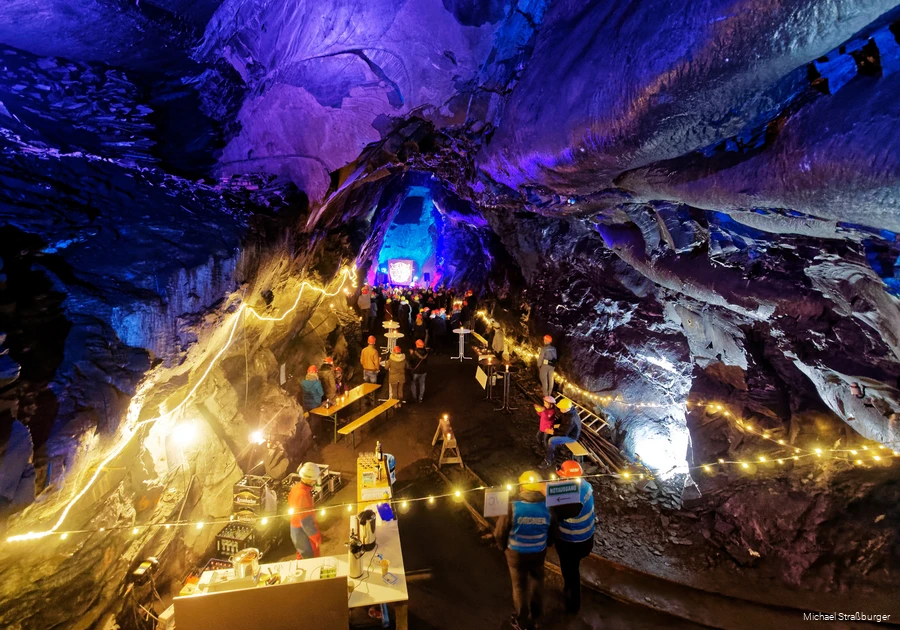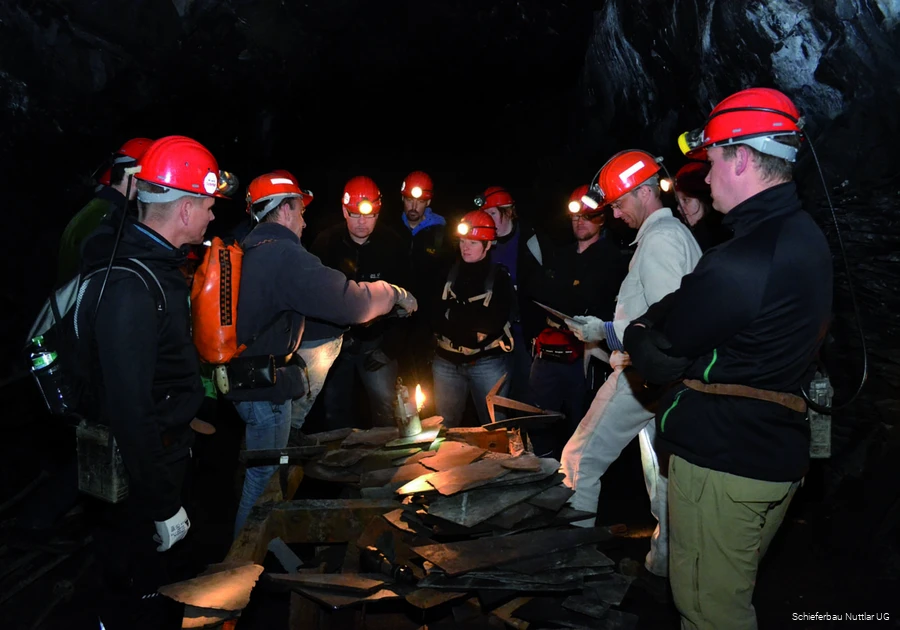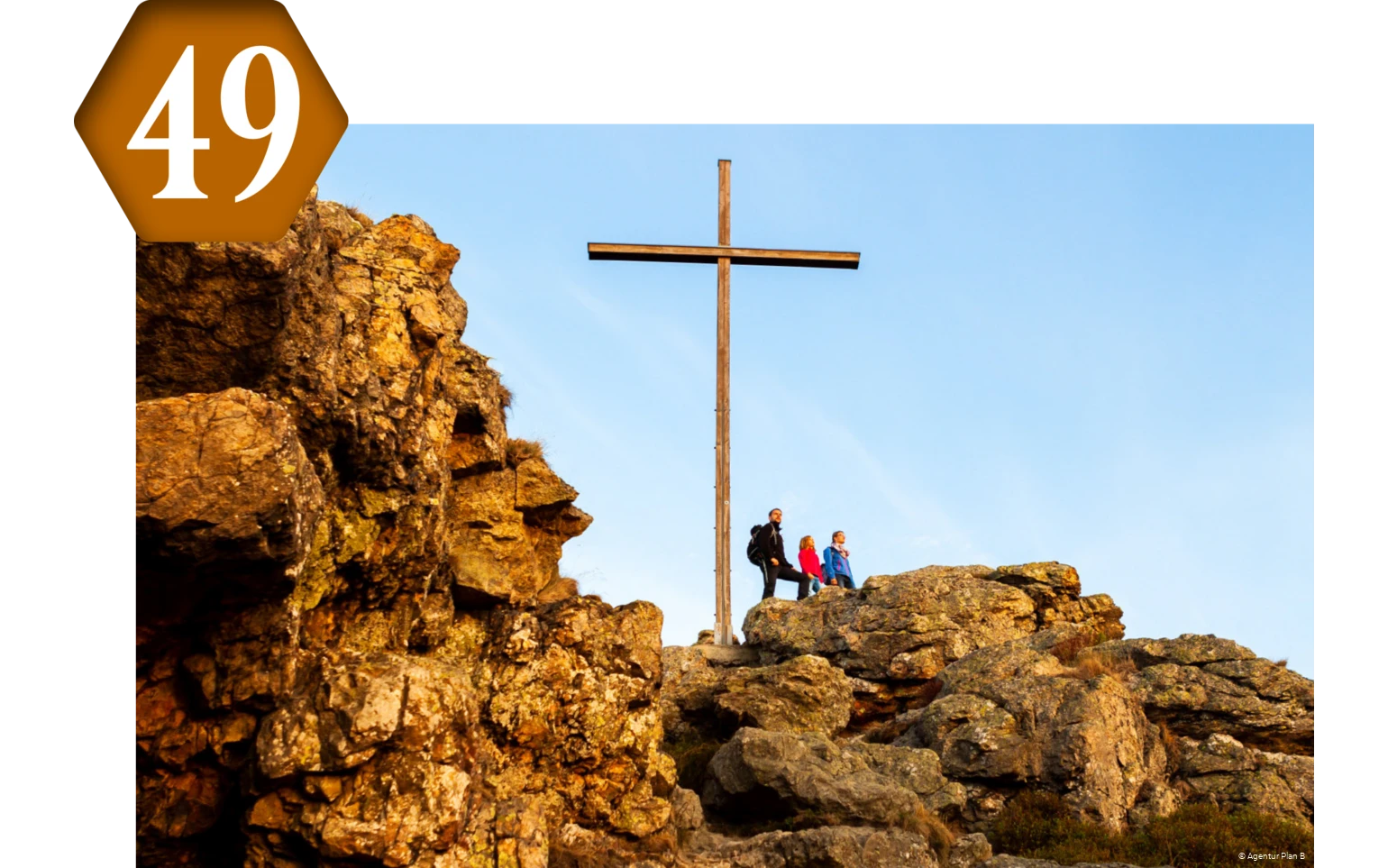A special experience: mine diving
Schieferbau Nuttlar
Slate crusher - the word alone sounds like a back-breaking job. For the workers of Nuttlar it is everyday life. All the more so since the slate boom triggered by the construction of the Ruhr Valley Railway in 1873. It opened up new sales markets and caused the local slate mining industry to move underground. There it leaves behind an enormous labyrinth - for today's visitors a fantastic underground adventure ...
- Infotext read more
-
… Cleared paths? Stonewalled steps? Electric light? Not in the "Kaiser Wilhelm Adit". Instead, the headlamp reveals a hidden world of narrow passages, cathedral-like halls and shimmering lakes. Trolleys, front loaders and pneumatic hammers recall a time when the Sauerland exported its slate en masse to the Ruhr District and even abroad.
Take blackboards, for example: Nuttlar is the only place in Westphalia to produce them. The slate comes from top-quality deposits and is quarried in slabs up to nine square metres in size. Other types of slate work better for roofs and facades or serve as material for pool tables, urinals and power control panels.
During World War I, slate from Nuttlar is used as an insulator for electrical installations, and in World War II it booms to cover bombed-out roofs of cities.
No wonder that the village's coat of arms features the slate hammer. The first open-cast mines probably date back to the 11th century and have shaped the image of the region ever since. In 1873, the Ruhr River Line provides an impressive boost. Only five years later, the new link to the neighbouring Ruhr District results in deep mining operations starting in the Kaiser-Wilhelm-Stollen. Until 1910 the slate workers would drill blastholes or carve out slate beds while using oil lamps. In the following decades, carbide lamps, air-powered tools, electric lighting and modern mining machines are introduced and fundamentally change the working conditions. After 107 years of operation and around 20 kilometres of underground galleries, the last miners' shift is completed in 1985 – the site cannot compete with artificial slate and low-cost imports from abroad. In 2014, it celebrates a comeback as a mine open to visitors, recreating the work of generations of miners. Apart from that, it ranks among the most unusual diving spots in the world with its partially flooded sections.
Steel Time Travel Destinations Nearby
The "steel time travelers" Luise & Alfred: Schieferbau Nuttlar
Al:
Another mine? And I always thought that the area between the Ruhr and the Emscher had the most shafts and treasures ...
- Full dialog text
-
Al: Another mine? And I always thought that the area between the Ruhr and the Emscher had the most shafts and treasures ...
Lu: Black gold may have helped you to prosperity and saved us Sauerlanders from clear-cutting - but it's not always just about hard coal or iron ore, woll!
Al: Well, for me it is ...
Lu: And what did you use to cover the roof of your pompous little house?
Al: With the finest copper, just like your church steeples in ...
Lu: Our little castle in Wocklum also has a noble roof - but made of slate in the Sauerland style. And it is broken here, in hard manual labor - real hard work for real guys!
Al: Then let's dive in - I don't want to be a splitter. And for the Ruhr Valley Railway, slate construction is certainly a profitable customer.
Visitor information
Address:
Briloner Straße 48a
59909 Bestwig-Nuttlar
Phone: 0177/6844769
schieferbau-nuttlar@t-online.de
www.schieferbau-nuttlar.de
Schieferbau Nuttlar is currently closed for an indefinite period.
![]()
![]()
"Through the beautiful Westphalia" (1929) + "Diving in the mine" (1993)
Brief description (film without sound)
The first part shows the extraction and processing of roofing and slate. The slates are driven out of the mountain on lorries and stacked on the outside area.
The second sequence shows experienced cave divers diving in the nowadays flooded part of the slate mine in Nuttlar.
